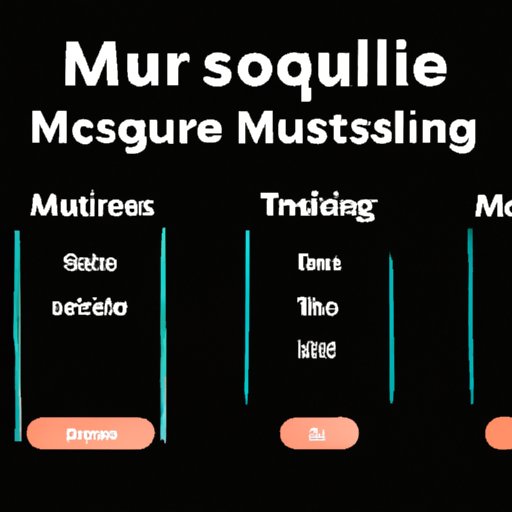I. Introduction
Working out is an essential part of a healthy lifestyle, and it comes with a fair share of expected side effects. One of such is soreness, which occurs after an exercise session or a workout routine. While some people may feel sore after working out, some may not experience any discomfort. So you may be wondering, why am I not sore after a workout? In this article, we will explore different aspects related to muscle soreness and workout effectiveness.
II. The Science Behind Being Not Sore After a Workout: Explanations You Need to Know
Soreness occurs after a workout due to microscopic damage to the muscle fibers. This damage triggers a response from the immune system, leading to inflammation and pain. However, not feeling sore after a workout may be related to individual differences in recovery, hydration, nutrition, and sleep. For example, athletes who are more experienced may not experience soreness regularly due to their bodies adapting to the exercises. Also, proper hydration and nutrition help the body recover quicker, reducing soreness.
III. No More Pain, No More Gain? Exploring the Controversy Around Muscle Soreness After Exercise
Many people believe that muscle soreness is a sign of progress and growth. However, soreness alone does not necessarily mean that a workout was effective. Soreness can result from various factors beyond exercise such as sitting in the same position for an extended period, sleeping on a hard surface, or performing a new exercise for the first time.
IV. Muscle Soreness: Is it Really a Reliable Indicator of Workout Effectiveness?
While soreness may be an indication that the muscle has been challenged, it is not the sole measure of workout effectiveness. Soreness can be influenced by various factors, such as previous exercise experience, workout intensity, and type. Basing progress solely on soreness can also lead to inconsistency and demotivation when the anticipated soreness does not occur. Therefore, it is best to use other metrics to track progress and evaluate workout effectiveness.
V. Why You Shouldn’t Rely on Soreness Alone to Measure Your Fitness Progress
Basing workout progress solely on soreness can be misleading and lead to unnecessary pain, injury, and burnout. There are various alternative measures to track progress and prevent overexertion. Performance measurements such as strength gains, endurance, speed, and flexibility can serve as an excellent tool in assessing workout effectiveness. Using these metrics instead of soreness can provide a more holistic view of fitness progress and help maintain a consistent workout routine.
VI. Soreness is Not the Only Sign of a Good Workout: How to Track Your Progress Through Other Metrics
To track progress through alternative metrics, it is essential to have a balanced and comprehensive workout plan that focuses on multiple aspects of fitness. This should be tailored to individual preferences and goals to help achieve the desired results. Additionally, progress tracking for these metrics can involve keeping a log of performance and strength gains or incorporating wearable fitness tech that records exercise data such as heart rate and calories burned.
VII. Conclusion
While soreness is an expected effect of exercising, it should not be the sole measure of workout effectiveness and progress. Various factors influence soreness, including recovery, nutrition, hydration, and individual differences. Focusing solely on soreness can lead to inconsistency and demotivation, while alternative metrics such as strength gains, endurance, speed, and flexibility can provide a more comprehensive view of fitness progress. So, when you next ask yourself why am I not sore after a workout, remember that it is not the only indicator of progress.
